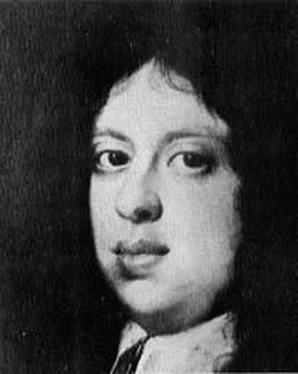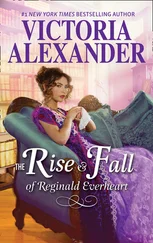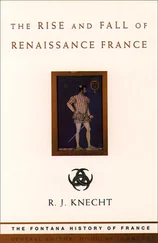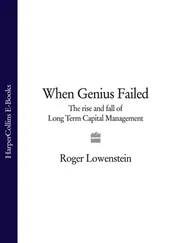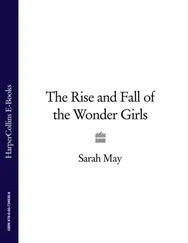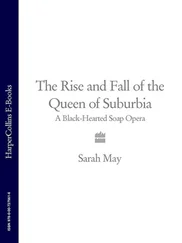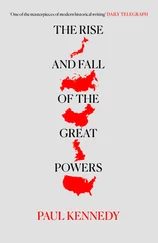The common people are convinced she went off in a hurricane of wind; a most violent one began this morning and lasted for about two hours, and now the sun shines as bright as ever – this is proof. Besides, for a stronger, just the same thing happened when John Gaston went off. Nothing can destroy this opinion which people think they have been eye-witnesses to… On the Monday morning her Confessor by a stratagem was carried to her, for she would not have him sent for and… he was bid to tell her she must soon die, to which she answered by asking him with some emotion,’ Who told you so?’ He replied: ‘Her physicians.’
‘Very well, then let us do what there is to be done; and do it quickly.’ So they brought her the Communion… She was sensible to the last, but she did not speak for about an hour and a half before she died… She has lain in state in the great hall of the palace since Thursday morning, and is to be buried tonight… [So] the poor remains of the Medici is soon to join her ancestors.
The family mausoleum at San Lorenzo is not, however, her true memorial. In her will she bequeathed to die new Grand Duke and his successors all the property of the Medici, their palaces and villas, their pictures and statues, their jewels and furniture, their books and manuscripts – all the vast store of works of art assembled by her ancestors, generation after generation. She made one condition: nothing should ever be removed from Florence where the treasures of the Medici should always be available for the pleasure and benefit of the people of the whole world. 1
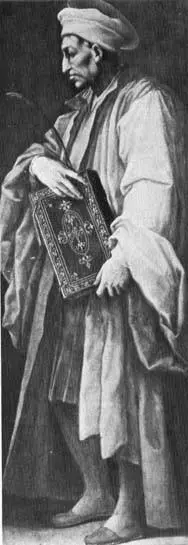
1. Cosimo di Giovanni de’ Medici, Pater Patriae , 1389–1464, by Pontormo
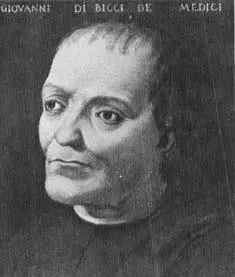
2. Giovanni di Bicci de’ Medici, 1360–1429, by Bronzino.
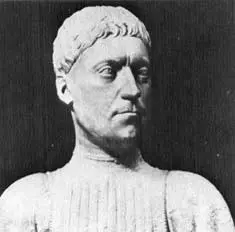
3. Piero di Cosimo de’ Medici, ‘il Gottoso’, 1416–1469, by Mino da Fiesole.

4. Giovanni di Cosimo de’ Medici, 1424–1463, by Mino da Fiesole.

5. Giuliano di Piero de’ Medici, 1453–1478, by Botticelli.
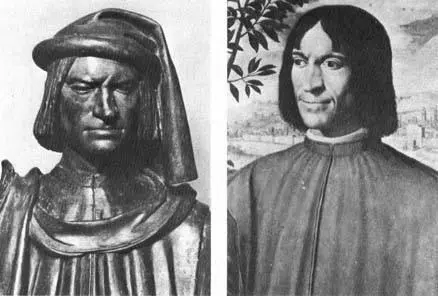
6 and 7. Lorenzo di Piero de’ Medici, ‘il Magnifico’, 1449–1492.
Left a painted terracotta by Verrocchio. Right anonymous painting.
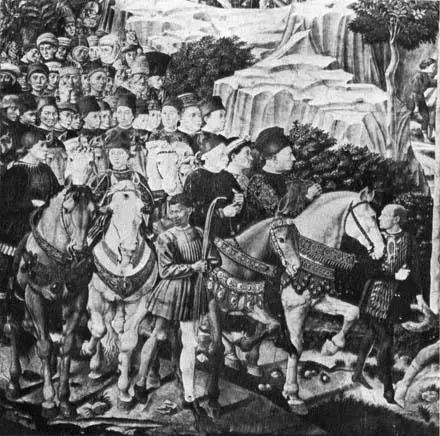
8. A detail of The Procession of the Magi , the mural by Gozzoli in the chapel in the Medici Palace. Suggestions about the identity of the various figures are given on pages 110–11; but the man on the horse on the far right has also been identified as Piero de’ Medici, Gozzoli’s patron. Gozzoli left no room for doubt as to his own identity by painting his name on his hat.
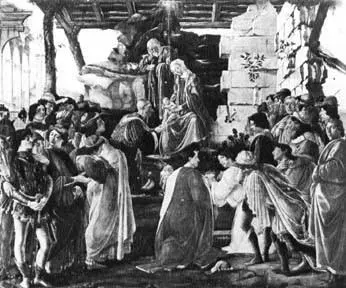
9. Botticelli’s Adoration of the Magi . As suggested on page 109 the young man withthe sword on the left is probably intended to represent Lorenzo the Magnificent. Thepossible identity of the other figures is given on page 320. The man on the extreme rightis usually taken to be Botticelli himself.
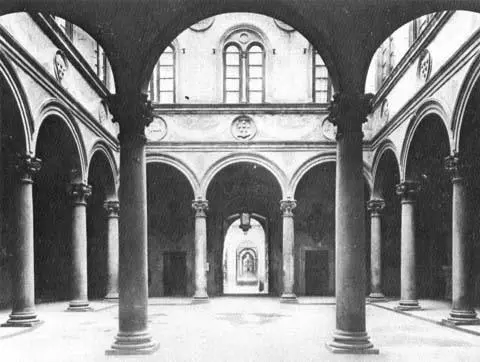
10. The courtyard of the Medici Palace was designed by MichelozzoMichelozzi. It is described on page 90.
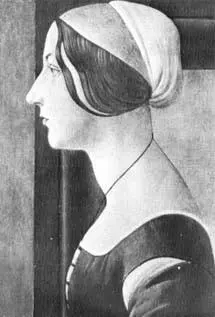
11. Botticelli’s Young Woman , though formerly supposed to represent either Clarice Orsini or Simonetta Vespucci, is more likely to be a portrait of Fioretta Gorini, mistress of Giuliano de’ Medici and mother of Giulio who later became Pope Clement VII.

12. Piero di Lorenzo de’ Medici, 1471–1503, by Bronzino.
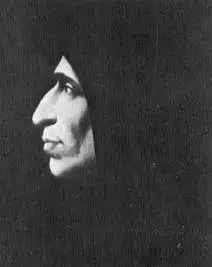
13. Girolamo Savonarola, 1452–1498, by Fra Bartolommeo.
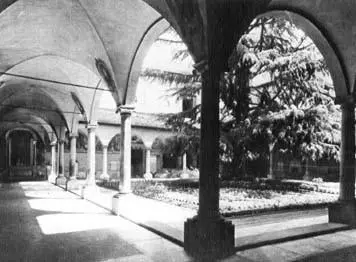
14. The cloister of San Marco. Michelozzo was commissioned to rebuild this monastery by Cosimo de’ Medici. Savonarola became Prior here in 1491.

15. King Charles VIII’s army entering Florence on 17 November 1494. by Granacci. A corner of the Medici Palace can be seen on the left.
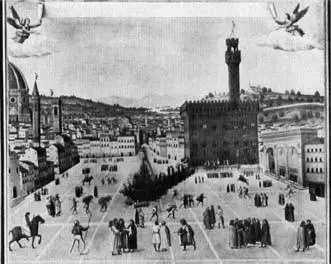
16. The execution of Savonarola in the Piazza della Signoria on 23 May 1498, by an unknown artist.
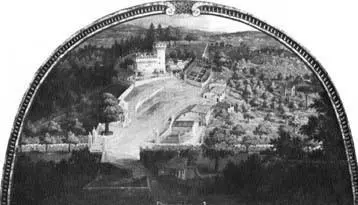
17. The Medici villa il Trebbio by Giusto Utens. Cosimo retreated to this villa during the anti-Medicean plot of 1433. It later passed into the hands of Giovanni delle Bande Nere.
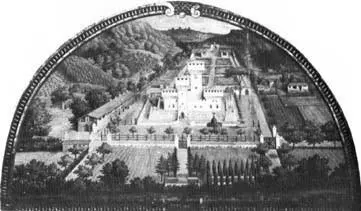
18. The Medici villa at Cafaggiolo by Giusto Utens. It was rebuilt for Cosimo by Michelozzo on an estate which the family had owned for generations. One of the towers has since been demolished
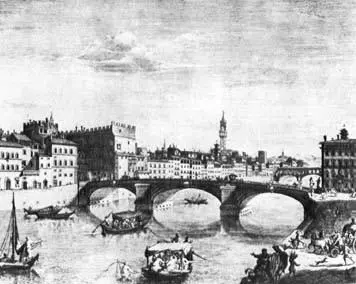
19. The Ponte Santa Trinità was rebuilt by Bartolommeo Ammanati between 1567 and 1569. Beyond it may be seen the Ponte Vecchio and the tower of the Palazzo della Signoria, by this time known as the Palazzo Vecchio.
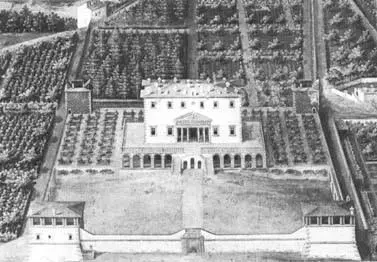
20. The villa of Poggio a Caiano by Giusto Utens. It was converted by Giuliano da Sangallo for Lorenzo the Magnificent. The loggia and pediment were added in the time of his son, Pope Leo X.
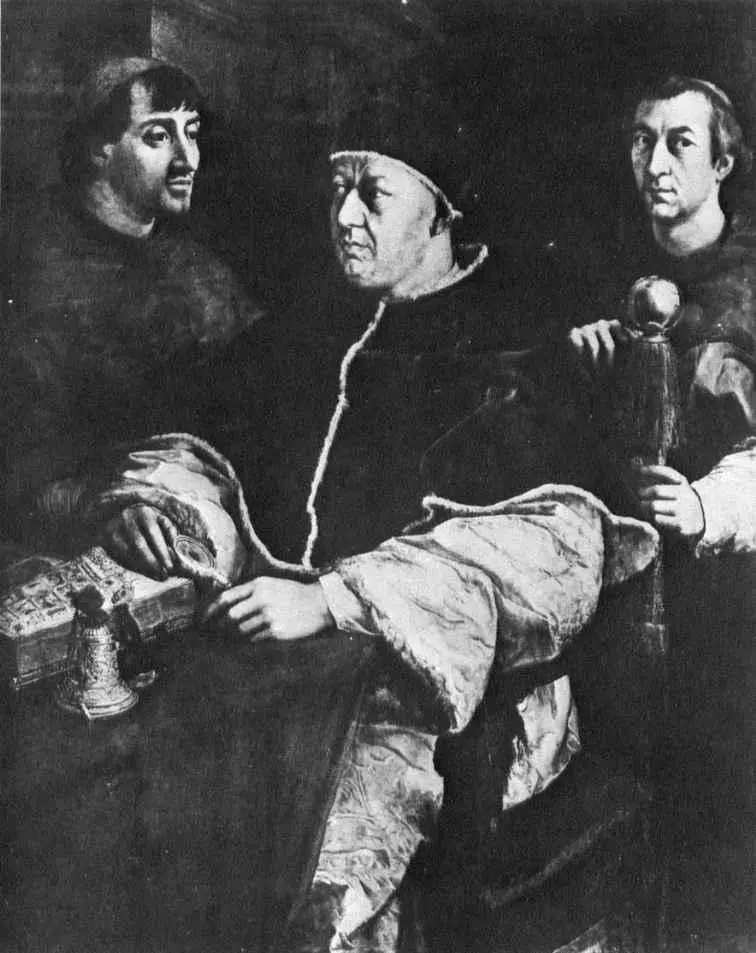
21. Giovanni di Lorenzo de’ Medici, Pope Leo X, portrayed by Raphael with the Pope’s cousin, Giulio, the future Pope Clement VII, on his right and Cardinal Luigi de’ Rossi standing behind the chair.
Читать дальше
